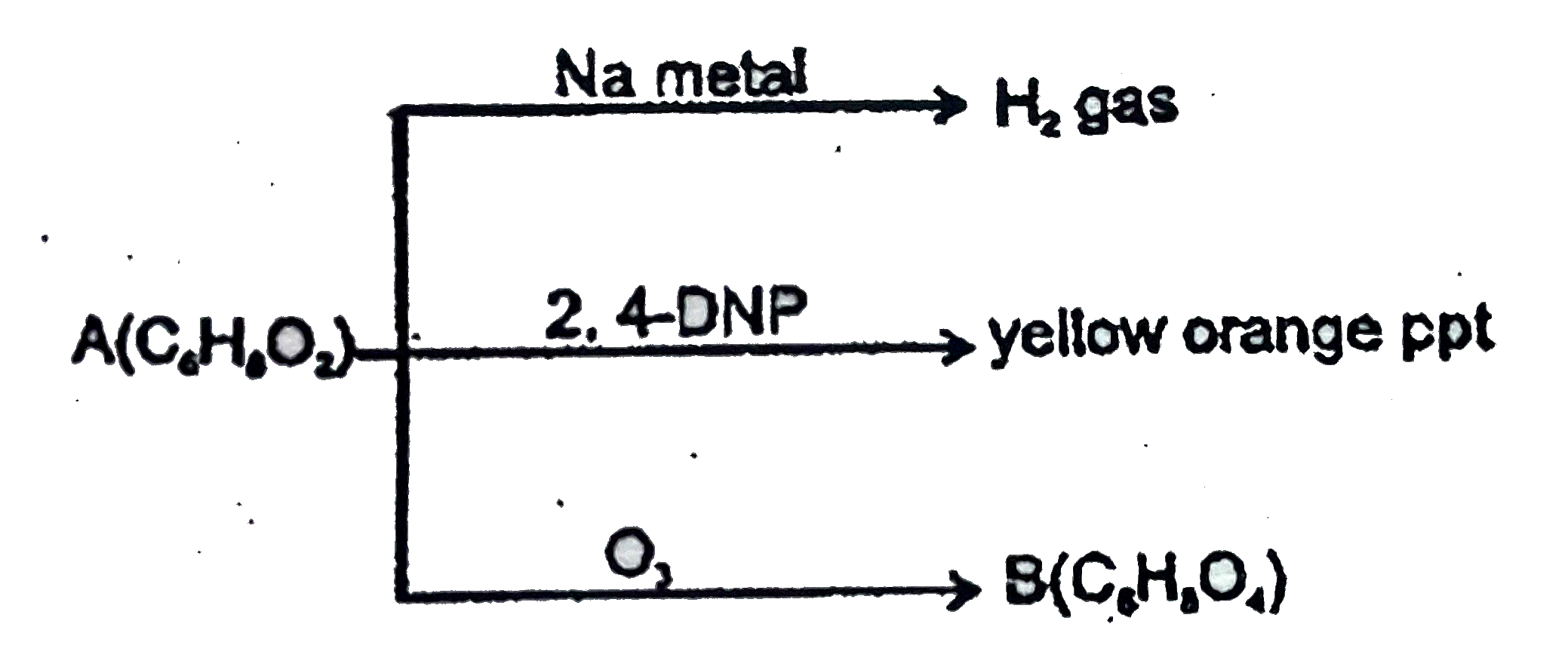A compound (A) is formed by the reaction of ethylene with bromine which on reacting with aqueous KOH gives a compound (B). The compound (B) can also be prepared by the reaction of ethylene with the following:
Baeyer’s reagent
Oxygen in the presence of silver catalyst and then acidic hydrolysis
performic acid and the product undergoes acidic hydrolysis
All of the above
The correct Answer is:D
To solve the problem, we will follow these steps:
Step 1: Identify Compound A
The question states that compound A is formed by the reaction of ethylene (C2H4) with bromine (Br2). This reaction is an addition reaction where bromine adds across the double bond of ethylene.
Chemical Reaction:
C2H4+Br2→C2H4Br2
Compound A: 1,2-dibromoethane (C2H4Br2)
Step 2: Identify Compound B
The question mentions that compound A (1,2-dibromoethane) reacts with aqueous KOH to form compound B. In this case, KOH acts as a nucleophile and replaces one of the bromine atoms with a hydroxyl group (OH), resulting in the formation of ethylene glycol.
Chemical Reaction:
C2H4Br2+KOH→C2H4(OH)2+KBr
Compound B: Ethylene glycol (C2H6O2)
Step 3: Alternative Preparations for Compound B
The question asks how compound B (ethylene glycol) can also be prepared from ethylene. We can consider the following methods:
1. Baeyer's Reagent (Acidified KMnO4):
- Ethylene reacts with Baeyer's reagent, which oxidizes the double bond and forms ethylene glycol.
- Chemical Reaction:
C2H4+(O)→C2H6O2
2. Reaction with Oxygen in the Presence of Silver Catalyst:
- Ethylene can react with oxygen in the presence of a silver catalyst to form an epoxide, which upon acid hydrolysis yields ethylene glycol.
- Chemical Reaction:
C2H4+OAg−→EpoxideH2O/H+−−−−−→C2H6O2
3. Reaction with Performic Acid followed by Acid Hydrolysis:
- Ethylene reacts with performic acid to form an epoxide, which upon acid hydrolysis also yields ethylene glycol.
- Chemical Reaction:
C2H4+Performic Acid→EpoxideH2O/H+−−−−−→C2H6O2
Conclusion
All three methods mentioned above can be used to prepare compound B (ethylene glycol) from ethylene. Therefore, the answer to the question is that compound B can be prepared by all of the above methods.
Final Answer:
All of the above methods can prepare compound B (ethylene glycol).
---
The question states that compound A is formed by the reaction of ethylene (C2H4) with bromine (Br2). This reaction is an addition reaction where bromine adds across the double bond of ethylene.
C2H4+Br2→C2H4Br2
The question mentions that compound A (1,2-dibromoethane) reacts with aqueous KOH to form compound B. In this case, KOH acts as a nucleophile and replaces one of the bromine atoms with a hydroxyl group (OH), resulting in the formation of ethylene glycol.
C2H4Br2+KOH→C2H4(OH)2+KBr
The question asks how compound B (ethylene glycol) can also be prepared from ethylene. We can consider the following methods:
- Ethylene reacts with Baeyer's reagent, which oxidizes the double bond and forms ethylene glycol.
- Chemical Reaction:
C2H4+(O)→C2H6O2
- Ethylene can react with oxygen in the presence of a silver catalyst to form an epoxide, which upon acid hydrolysis yields ethylene glycol.
- Chemical Reaction:
C2H4+OAg−→EpoxideH2O/H+−−−−−→C2H6O2
- Ethylene reacts with performic acid to form an epoxide, which upon acid hydrolysis also yields ethylene glycol.
- Chemical Reaction:
C2H4+Performic Acid→EpoxideH2O/H+−−−−−→C2H6O2
All three methods mentioned above can be used to prepare compound B (ethylene glycol) from ethylene. Therefore, the answer to the question is that compound B can be prepared by all of the above methods.
All of the above methods can prepare compound B (ethylene glycol).
Similar Questions
Pyrolustie on heating with KOH in the presence of air gives dark green compound (A).The solution of (A) on treatment with H2SO4 gives a purple coloured compound (B) which gives the following reactions :
(i) Alkaline solution of B on reaction with KI changes it into compound (C ).
(ii) The color of the compound (B) disappears on treatment with acidic soluiont of FeSO4.
(iii) On reaction with conc. H2SO4 compound (B) gives another compound (D) which can decompose to produce compound (E ) along with oxygen gas. Identify compounds (A) to (E ) and write balanced chemical equation involved in each case.
View SolutionWhich of the following compounds can be best prepared by Wurtz-reaction?
View Solution
Knowledge Check
Mustard gas can be prepared by the reaction of ethylene with
ASF6BSF4CS2Cl2DSCl4The compound that forms racemic products on reaction with aqueous KOH is
A3, 4-dimethyl-1-iodopentaneB2, 3-dimethyl-3-iodopentaneC1-iodo-3-methylpentaneD1-iodo-4-methylpentane.The compound formed by reaction of ethylene glycol an periodic acid (HIO4) is :
Acarbon dioxideBformic acidCformaldehydeDglyoxal
Non-ionic detergent can be prepared by reaction of _________ with ethylene oxide
View SolutionPropyl lithium reacts with ethene to give a compound (A), which on reaction with methanal followed by acidic hydrolysis gives compound (B). The compound (B) is :
View SolutionA compound A gives following reactions.

Its structure can be
View SolutionA compund reacts with CHCl3 and KOH gives offensive smelling compound A. 'A' can be
View SolutionWhich compound is predominantly formed when phenol is allowed to react with bromine in aqueous medium?
View Solution

